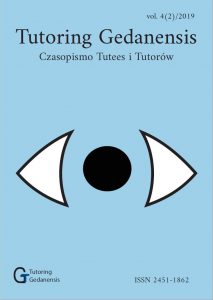Dlaczego endemity są wyjątkowe?
Słowa kluczowe:
endemity, Galapagos, źródła hydrotermalne, Amblyrhynchus cristatus, Alvinella pompejanaDownloads
Bibliografia
Literatura Cary S. C., Cottrell M. T., Stein J. L., Camacho F., Desbruyeres D., 1997. Molecular identification and localization of filamentous symbiotic bacteria associated with the hydrothermal vent annelid Alvinella pompejana. Applied and Environmental Microbiology, 63(3):1124–30.
Darwin K., 1998. Beagle Diary, cyt., s.353, wpis z 17 września 1835 r. Wydawnictwo Cambridge University Press.
Desbruyères D., Chevaldonné P., Alayse A.-M., Jollivet D., Lallier F. H., Jouin-Toulmond C., Zal F., Sarradin P.-M., Cosson R., Caprais J.-C., Arndt C., O’Brien J., Guezennec J., Hourdez S., Riso R., Gaill F., Laubier L., Toulmond A., 1998. Biology and ecology of the “Pompeii worm” (Alvinella pompejana Desbruyères and Laubier), a normal dweller of an extreme deep-sea environment: A synthesis of current knowledge and recent developments”. Deep Sea Research Part II: Topical Studies in Oceanography, 45, 1-3, 383–422.
Gagnière N., Jollivet D., Boutet I., Brélivet Y., Busso D., Da Silva C., Gaill F., Higuet D., Hourdez S., Knoops B., Lallier F., Leize-Wagner E., Mary J., Moras D., Perrodou E., Rees J.-F., Segurens B., Shillito B., Tanguy A., Thierry J.-C., Weissenbach J., Wincker P., Zal F., Poch O., Lecompte O., 2010. Insights into metazoan evolution from alvinella pompejana cDNAs. BMC Genomics, 10.1186/1471-2164-11-634.
Grime J.,P., Pierce S., 2012 .The Evolutionary Strategies that Shape Ecosystems. Wiley-Blackwell
Grzymski J., J., Murray A.,E., Campbell B., J., Kaplarevic M., Gao G.,R., Lee C., Daniel R., Ghadiri A., Feldman R.,A., Cary S.,C., 2008. Metagenome analysis of an extreme microbial symbiosis reveals eurythermal adaptation and metabolic flexibility. PNAS, 105 (45) 17516–17521.
Haddad A., Camacho F., Durand P., Cary S.,C., 1995. Phylogenetic characterization of the epibiotic bacteria associated with the hydrothermal vent polychaete Alvinella pompejana. Appl Environ Microbiol, 61(5):1679–87.
Hayes W.,K., Carter R.,L., Wikelski M., Sonnentag J.,A., 2004. Determinants of Lek Mating Success in Male Galápagos Ma - rine Iguanas. Behavior, body size, condition, ornamantation, ecto - parasite load, and femal choice. In A. C. Alberts, R. L. Carter, W. K. Hayes, & E. P. Martins (Eds.). Iguanas: Biolog y and Conservation, Berkeley: University of California Press, 127–147.
Hobson E.,S., 1969. Remarks on aquatic habits of the Galapagos marine iguana, including submergence times, cleaning symbiosis, and the shark threat. Copeia, 401(2).
Hugi J., Sánchez-Villagra M.,R., 2012.Life History and Skeletal Adaptations in the Galapagos Marine Iguana (Amblyrhyn - chus cristatus) as Reconstructed with Bone Histological Data–A Comparative Study of Iguanines. Journal of Herpetolog y, 46(3):312– 324.
Jackson M.,H., 1993. Galapagos, a Natural History, University of Calgary Press Jeanthon C., Prieur D., 1990. Susceptibility to heavy metals and characterization of heterotrophic bacteria isolated from two hydrothermal vent polychaete annelids, Alvinella pompejana and Alvinella caudata. Appl. Environ. Microbiol. Appl Environ Microbiol, 56(11): 3308–3314.
Laurie W.,A., June 1990. Population Biology of Marine Iguanas (Amblyrhynchus cristatus). I. Changes in Fecundity relates to a population crash. Journal of Animal Ecology, 59, 515–28.
Laurie W.,A., Brown D.,1990. Population Biology of Marine Iguanas (Amblyrhynchus cristatus). III. Factors Affecting Survival. Journal of Animal Ecology 59(2), 545.
Nicholl H., 1973. Galapagos : historia naturalna, Wydawnictwo W.A.B.
Pradillon F.,. Zbinden M., Mullineaux L.,S., Gaill F., 2005. Colonisation of newly-opened habitat by a pioneerspecies, Alvinella pompejana(Polychaeta:Alvinellidae), at East Pacific Rise vent sites. Marine Ecology Progress Series, 302:147–157.
Wikelski M., Corinna T., 2000. Marine iguanas shrink to survive El Niño. Nature, vol 403, 37–38.
Wikelski M., Nelson K., 2004. Conservation of Galápagos Marine Iguanas. Amphibia-Reptilia, 37(1).
Wikelski M., Vitousek M.,N., Rubenstein D.,R., 2005. The evolution of foraging behavior in the Galapagos marine iguana: natural and sexual selection on body size drives ecological, morphological, and behavioral specialization, Published by Cambridge University Press.
– The Migration of Young Marine Iguanas on Santa Cruz, June 18, 2012. Galapagos Conservancy dostęp: www.galapagos.org/newsro - om/the-migration-of-young-marine-iguanas-on-santa-cruz/” [dostęp: 9.11.2018],
– S. Botos: Life on a hydrothermal vent. W: Hydrothermal Vent Communities, dr Beata Szymczycha www.eduscience.pl, [dostęp: 20 lutego 2015]
– www.marinespecies.org/aphia.php?p=taxdetails&id=336171, [do - stęp: 20.03.2019]v

 Uniwersyteckie Czasopisma Naukowe
Uniwersyteckie Czasopisma Naukowe



